Her strong enchantments failing,
Her towers of fear in wreck,
Her limbecks dried of poisons
And the knife at her neck,
The Queen of air and darkness
Begins to shrill and cry,
'O young man, O my slayer,
To-morrow you shall die.'
O Queen of air and darkness,
I think 'tis truth you say,
And I shall die to-morrow;
But you will die to-day.
—A. E. Houseman, Last Poems III
This week, we return to The People of Light and Shadow series exploring the characters and creatures of fairytale and folklore, with “The Queen of Air and Darkness,” featuring actor Elizabeth MacDougald.
The Queen of Air and Darkness: Elizabeth MacDougald
Elizabeth MacDougald and I met in 2003 in a production of Twelfth Night, where we played the roles of Olivia and Orsino respectively. She is Distant Era’s MVP and my MVP. This is her birthday week.
We’ve been making costumed portraits featuring flowing medieval gowns with long sleeves since 2003 too. Here’s a shot from our first one, taken nearly twenty years ago on film with my first real camera, a Canon FTb.
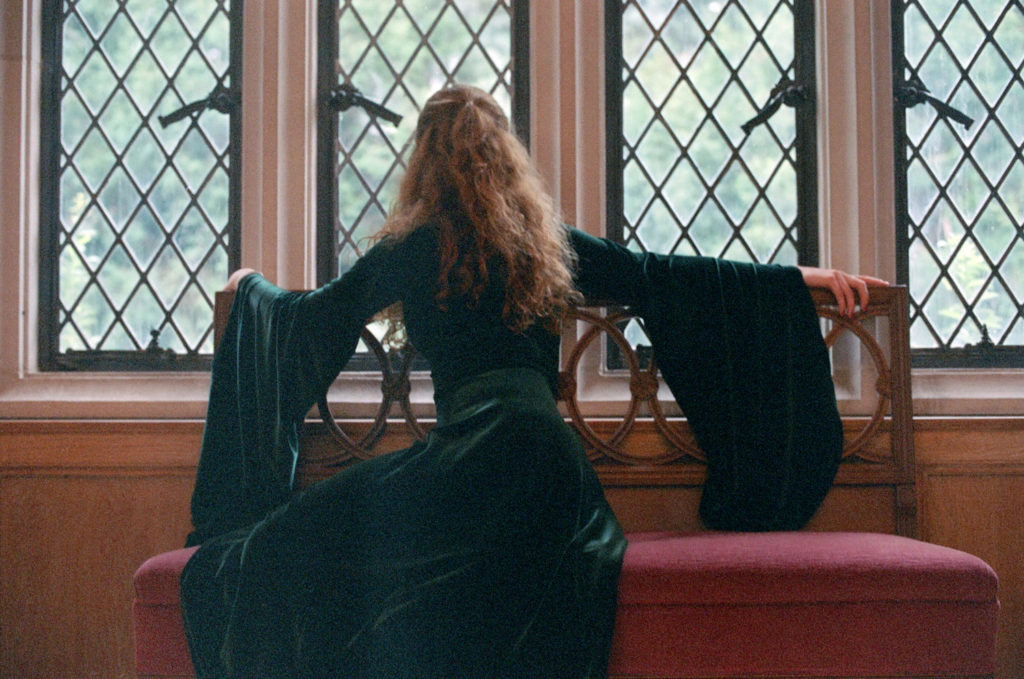
We initially bonded over a love of Shakespeare, Lord of the Rings, Blackadder, Dungeons & Dragons, and a whole lot of good times. She is the very best.
From the very beginning of Distant Era in 2019, before anything had begun, when there was no one to believe in it and I had more hope than faith, Elizabeth drove the city with me and posed in costume for the very first Distant Era Urban Fantasy images. Since then, she has not only appeared in each series but supported them, holding lights and reflectors, setting up makeup stations and backdrops, helping take down the studio and put it back up again, putting out healthy food for our guests, and lending her charm and wit and enthusiasm to every session. She is a force of nature, and I am extremely grateful to and for her and everything she does.
Here’s what she had to say about the Queen of Air and Darkness, inspired by author Jim Butcher’s contemporary take on the character.
Elizabeth MacDougald on the Character
“People adore monsters. They fill their songs and stories with them. They define themselves in relation to them. You know what a monster is, little shade? Power. Power and choice. Monsters make choices. Monsters shape the world. Monsters force us to become stronger, smarter, better. They sift the weak from the strong and provide a forge for the steeling of souls. Even as we curse monsters, we admire them. Seek to become them, in some ways. There are far, far worse things to be than a monster.”
Ghost Story, by Jim Butcher
When I met the Queen of Air and Darkness, I was instantly smitten. Who doesn’t love a good “bad girl”? She was smart, gorgeous, and very, very dangerous. She was winter: icy and hard and conniving. At first glance, she fit the stereotype of the Winter Court, the Dark Fey, the Unseelie perfectly.
But that’s the thing about stereotypes: they are so often so very wrong…
“You know what it is,” she said, “to sell pieces of your soul so that someone who will never know your name will have another chance at life…”
Battle Ground, by Jim Butcher
So many have the idea that the Unseelie, that Winter, that these are the “bad” ones. But these are not the villains. Read the series and you find the Winter Court to be allies, friends, even family. Mab’s logic is as cold and as hard as the season she is Queen of. But it does not make it wrong. There is a power in winter. And before you think that the warmth of summer is kinder, that fire is better than ice, how often have you been burned? And what have you reached for to sooth the pain? Life is about balance, and the Winter Court is a part of that balance, and the Queen of Air and Darkness holds her place and holds the line against things much darker… This is a character who gave up her mortality, and a not insignificant part of her humanity, for a cause so much greater than herself.
Plus, she has some of the best zingers in the entire series. And who doesn’t love a character that can tear someone apart without even lifting a finger?
“Mortal brute. Whatever your past, whatever your future, know this. I am Mab, and I keep my bargains. Question my given word again, ape, and I will finish freezing the water in your eyes.”
Small Favor, by Jim Butcher
Photography
Followers of The All Worlds Traveller and this series know that much of the series is shaped by concepts we want to practice and improve. In portrait fourteen, “The Fairies’ Midwife,” for instance, we practiced using the ambient illumination of a light-up moon prop as the key light for the image and gently filling in the rest with flash. As the series has continued, we’ve explored new territory and different techniques in photography and editing while maintaining a certain overall theme and tone—light and shadow.
“The Queen of Air and Darkness” explores new territory in the series in two main ways:
- This is the first portrait in the series to use only one light.
- It is the first portrait in the series to be shot on a gray background with the intent to replace that background in editing.
With our trusty 85 mm lens, we returned (after last week’s diversion) to our tried and true portraiture settings of f/8, ISO 100, 1/200 sec.
The light was to the left of the camera, a single 3′ x 4′ softbox, with a white V-flat filling in shadows to the right of the subject. We experimented with light from a soft white umbrella and a hard light from a beauty dish, but in the end, the single double-diffused softbox made for the most beautiful portraits. This is incidentally the same light we used on the very first portrait posted in The All Worlds Traveller and featuring the very same subject. We didn’t use a light to soften shadows this time, as none was necessary.
Makeup artist Rose Nobs did a spectacular job creating a smooth, beautiful, icy look for “The Queen of Air and Darkness,” accenting Elizabeth’s features with turquoise marks beneath the eyes—like icicles, or daggers.
Editing and Compositing
One of the reasons these portraits take so long to create is that each has presented its own challenge in editing. Some of those challenges are unexpected while others, like this one, are planned.
Some of last week’s images featuring “The Fairies’ Midwife” were shot on a seamless gray background, but those weren’t the ones we used, and there was no time to composite them accurately after finishing the main image shot on the blue canvas backdrop. This week seemed like the perfect time to photograph with the intention to composite.
A list of the techniques used or learned in this week’s compositing.
- Selecting the subject and refining the selection.
- Choosing an appropriate background and adjusting the background’s sharpness and detail in relation to the subject.
- Adjusting saturation to dial down yellows (a lot) and reds (somewhat) to create a more pallid complexion for our ice queen.
- Learning to create new pen pressure brushes in Photoshop to mask and draw in hair and eyebrows.
- Creating dodge and burn zones to quickly accent particular areas (in addition to dodging and burning those areas individually).
- Assessing the background and subject for their comparative luminosity and then toning the image so that the darkest and lightest points of the subject and background will be consistent.
- Adjusting the color tones of the subject and background shadows and highlights to be consistent.
In addition to some of these new tricks, we tackled the familiar editing tasks, deleting stray hairs and blemishes and so forth. As usual, it was a lengthy process but an extremely educational one with plenty of trial and error, and some welcome breakthroughs as well.
The Queen of Air and Darkness Story Inspirations
The Queen of Air and Darkness is a character—or rather title for a character—that has been adapted and changed over the last hundred years.
Untangling the Queen of Air and Darkness
The Queen of Air and Darkness was a title given to the character of Morgause, mother of Mordred and sister of Morgan le Fay, in a 1922 poem by British poet A. E. Houseman, and likely popularized by its use as the title of T. H. White’s sequel to The Once and Future King.
Over time, the identity of this character has shifted somewhat. I first heard of her while working on Dungeons & Dragons volumes. In D&D lore, the Queen of Air and Darkness was the ruler of the unseelie fey court and sister to Titania. It seems that in the Arthurian tales of the French court, Morgause is sister to Morgan le Fay; Morgan is often depicted as a faery or supernatural being from Celtic myth (i.e. the Morrigan), and perhaps this association is how the character of Morgause transforms into a similar sorcerous and/or fey character in later tales and adaptations, where she has been associated with a range of other characters, including Mab.
This is what Wikipedia has to say about her:
Morgause
“The Queen of Orkney, today best known as Morgause/mɔːrˈɡeɪz/ and also known as Morgawse and other spellings and names, is a character in later Arthurian traditions. In some versions of the legend, including the seminal text Le Morte d’Arthur, she is the mother of Gawain and Mordred, both key players in the story of King Arthur and his downfall. Mordred is the offspring of Arthur’s accidental incest with Morgause, the king’s estranged half-sister. She is furthermore a sister of Morgan le Fay and the wife of King Lot of Orkney, as well as the mother of Gareth, Agravain, and Gaheris, the last of whom murders her.”
So just who is the Queen of Air and Darkness? I suppose it depends on who you ask, and when. In contemporary fiction, we most often see her as a powerful fey queen, so that’s who she is in this series. And yet, I must note that when we brought home Garrus the cat, I wasn’t entirely sure I wanted to name him after a character from a video game, loyal companion though he may be. For a time, I considered calling him Gaheris, from the Arthurian tales, and then decided it was a more obscure reference and didn’t really matter. But observe the murderous look in his eye. The myth of Gaheris and Morgause playing itself out in the here and now?


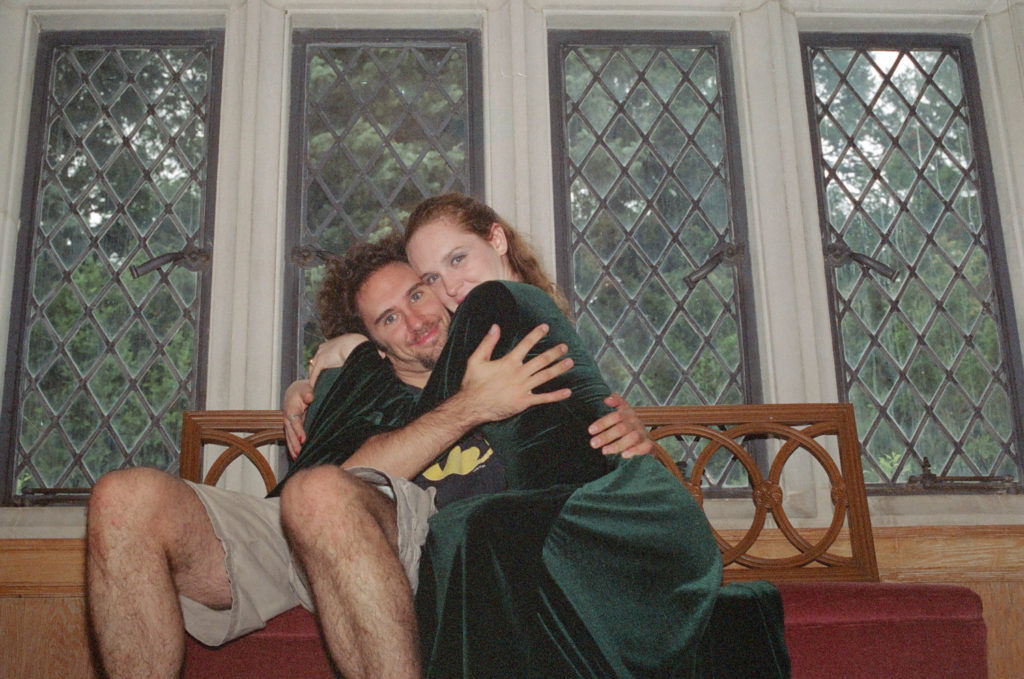
Next in The People of Light and Shadow series…
A little something foolish for April.

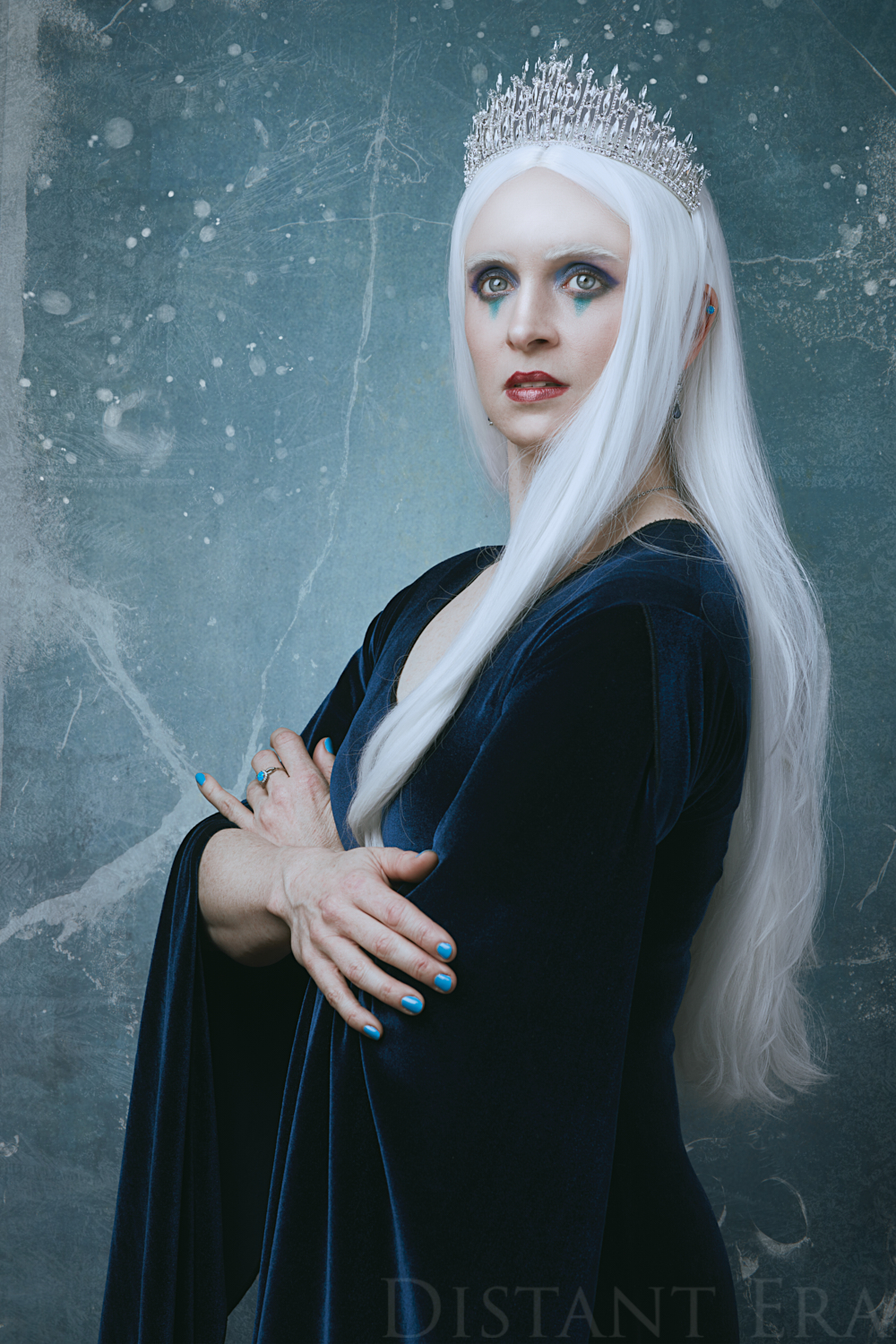
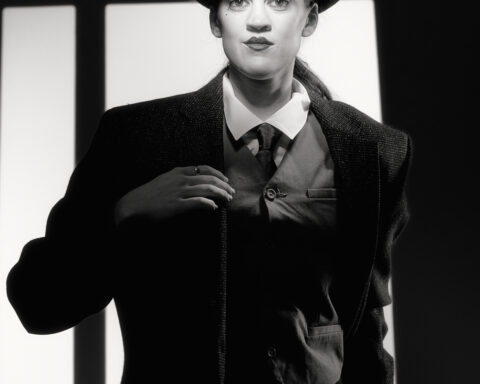
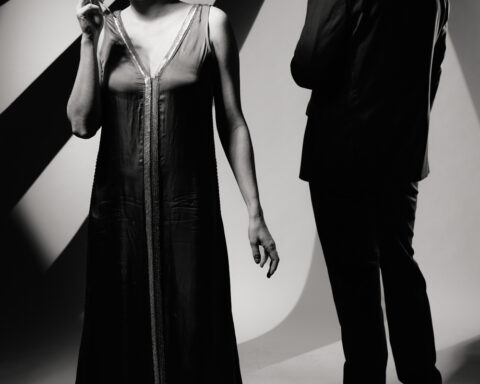
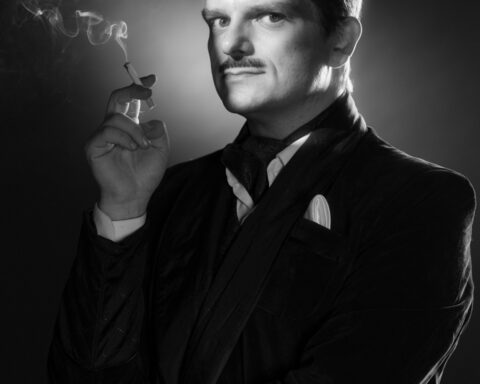
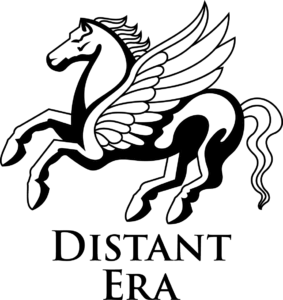
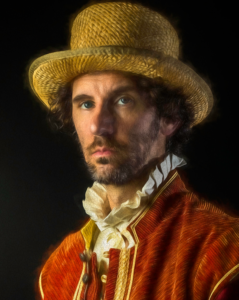

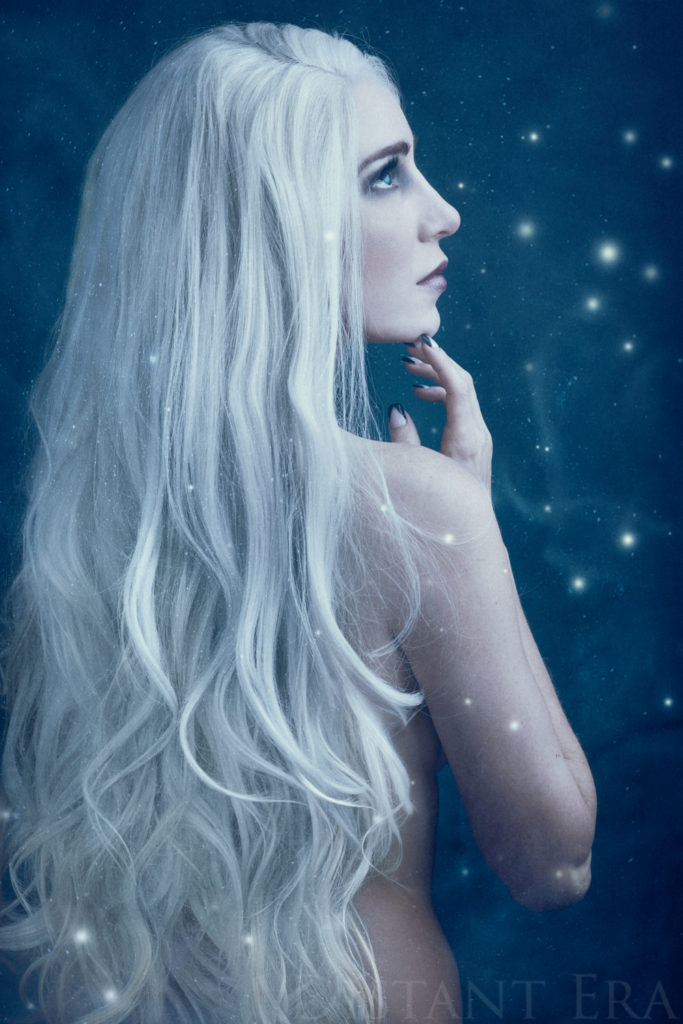
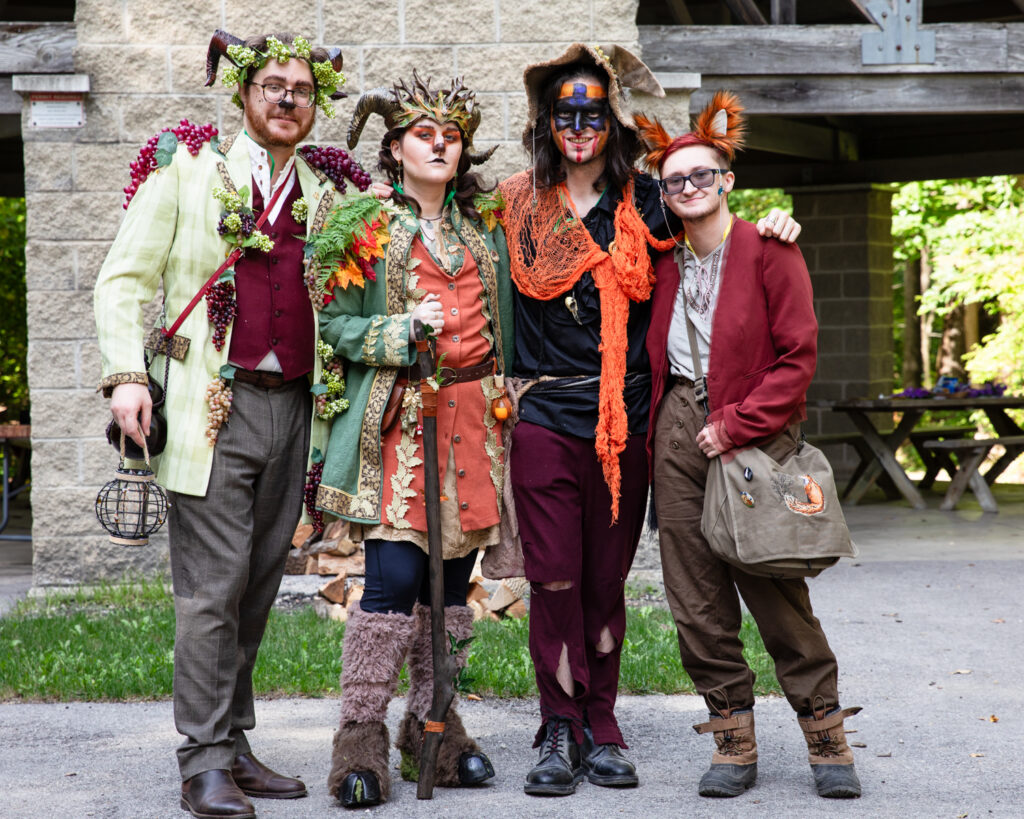
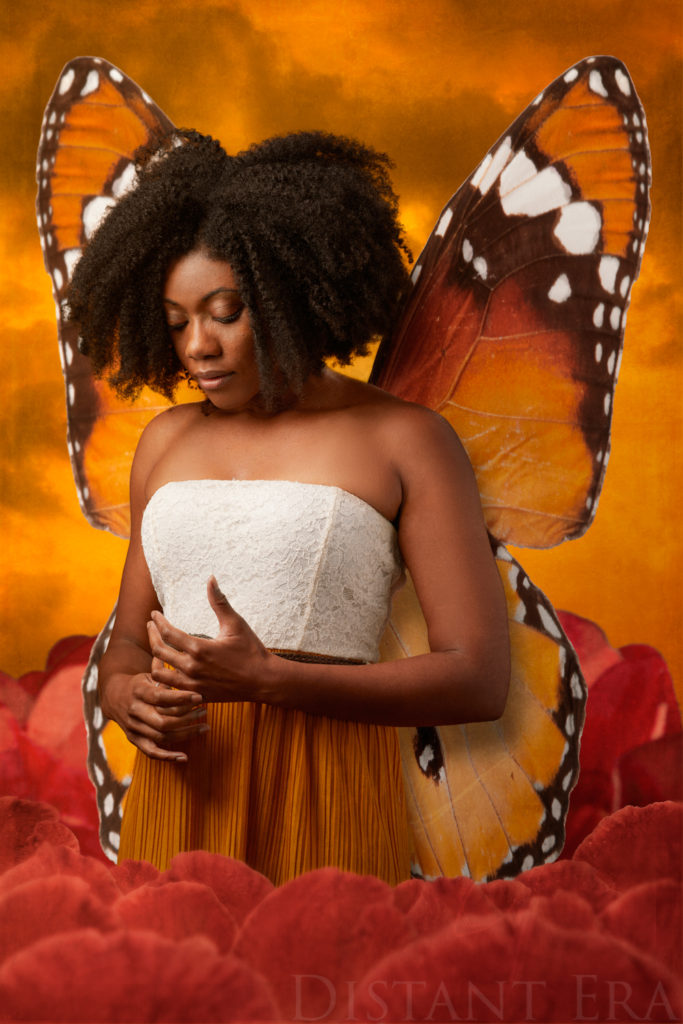
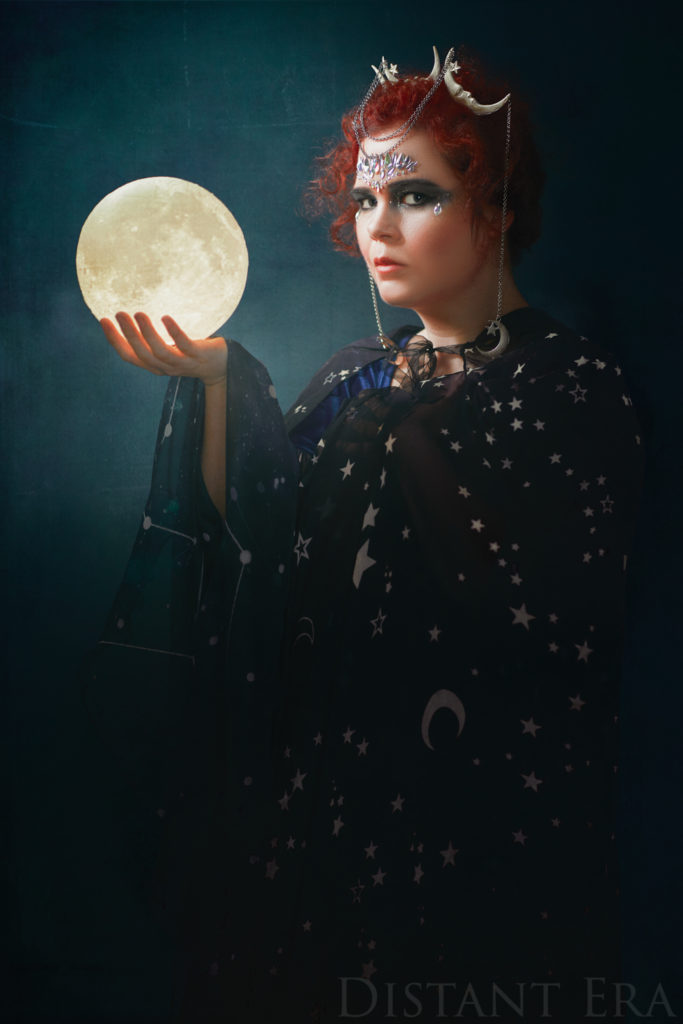

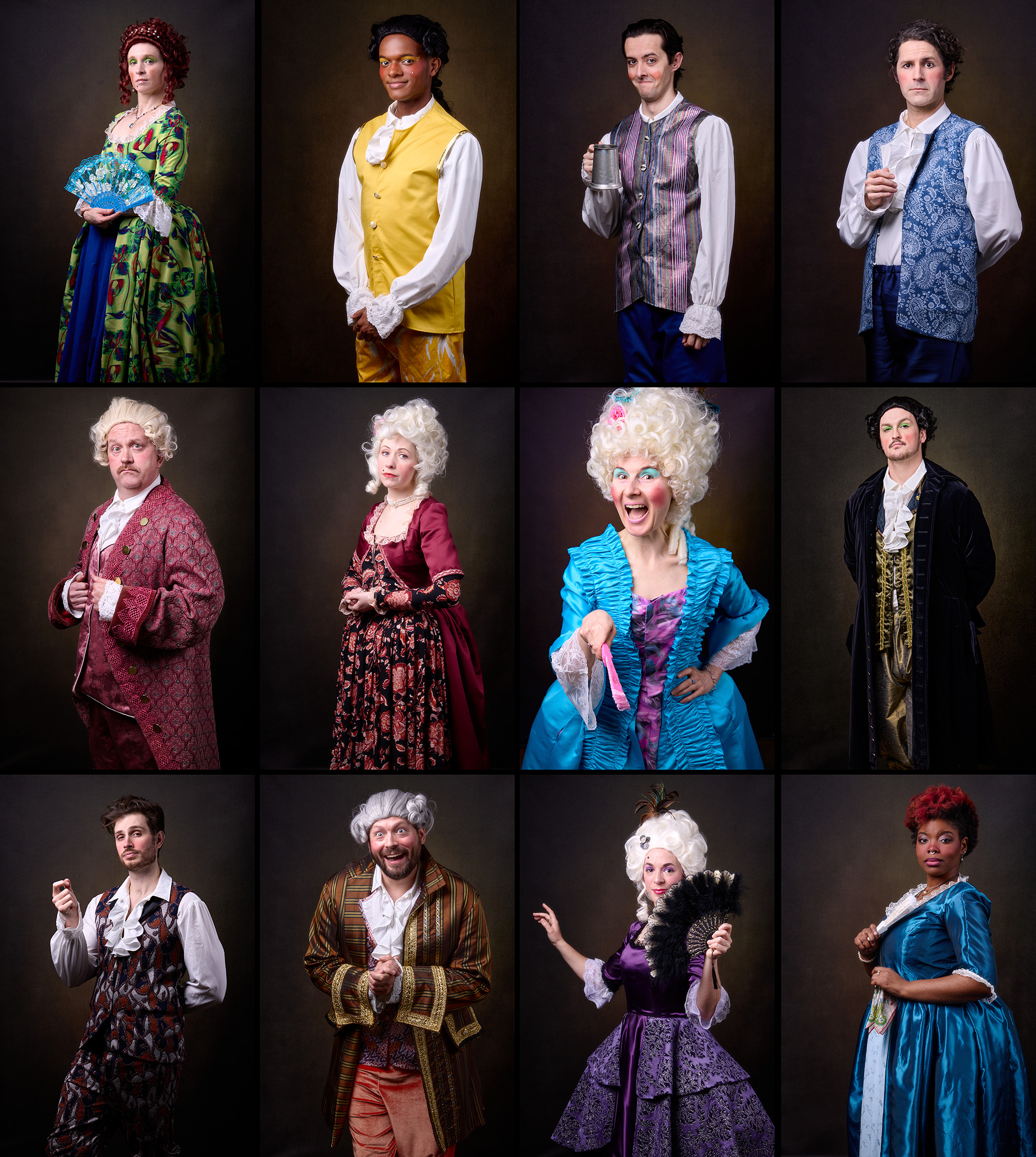
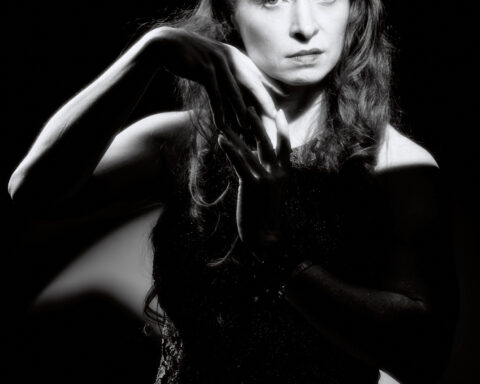
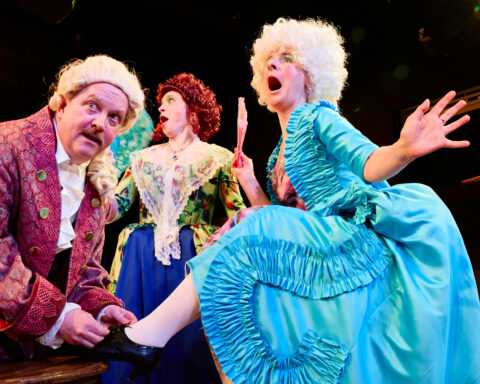
[…] we used a relatively simple lighting setup. We began with similar lighting to “The Queen of Air and Darkness,” using the 3′ x 4′ softbox as the key light camera left and then a 65″ […]